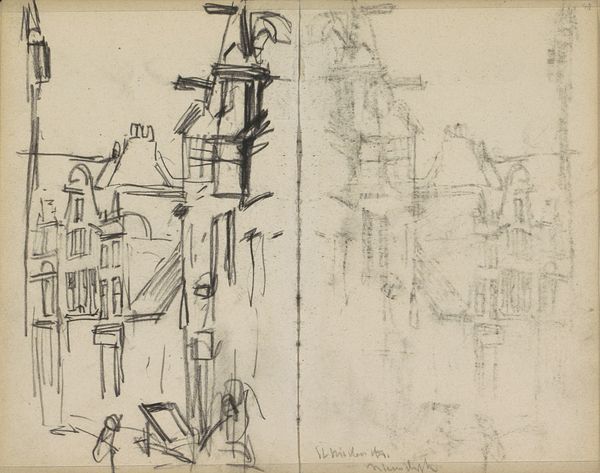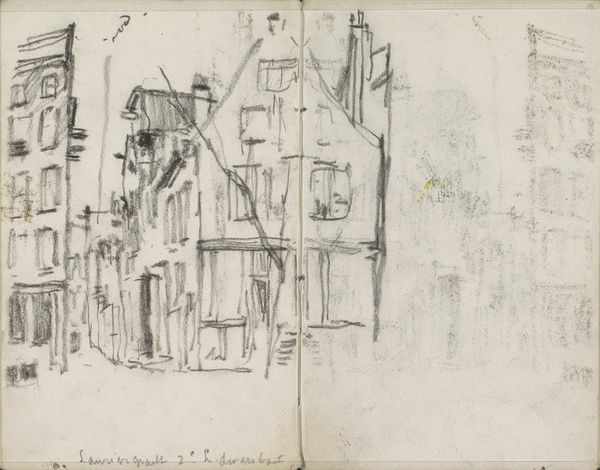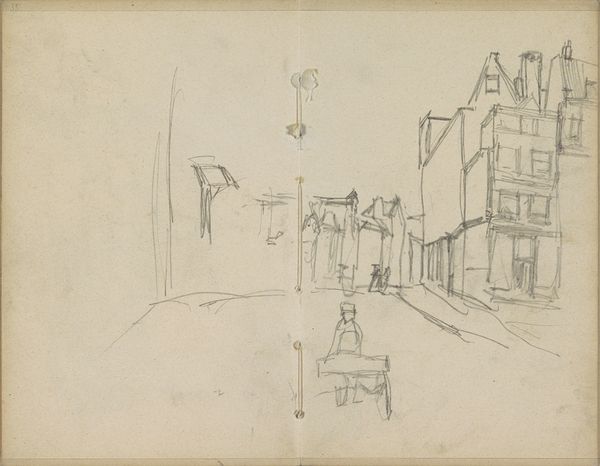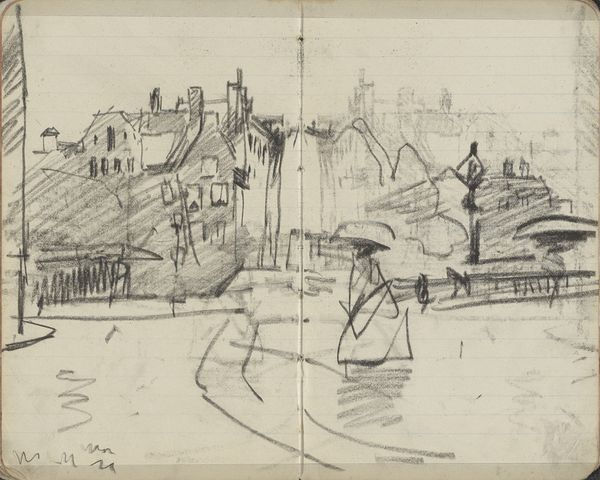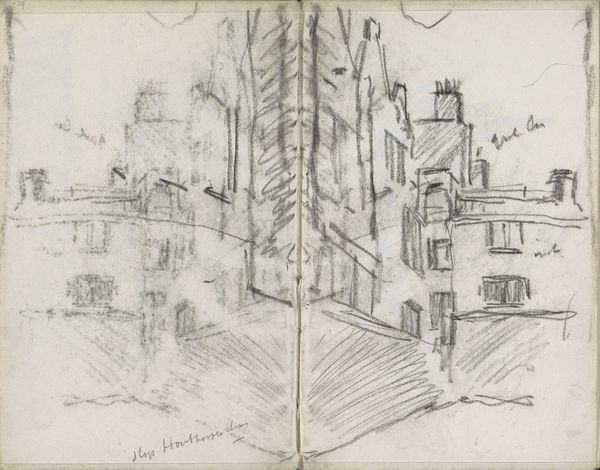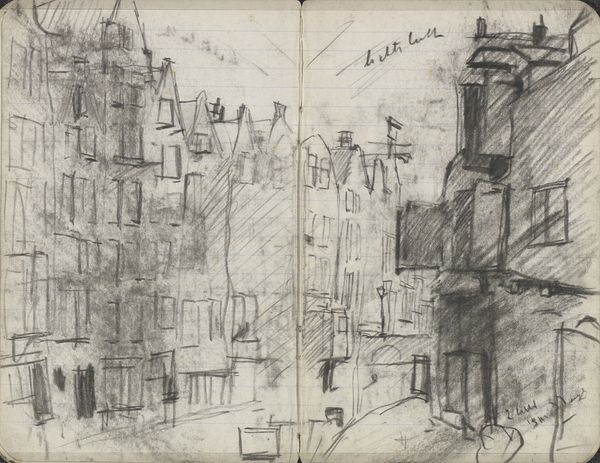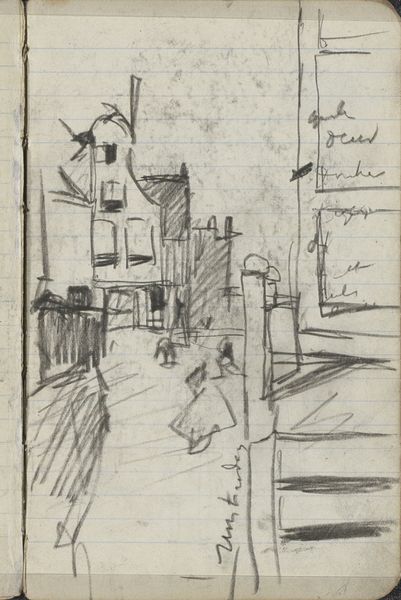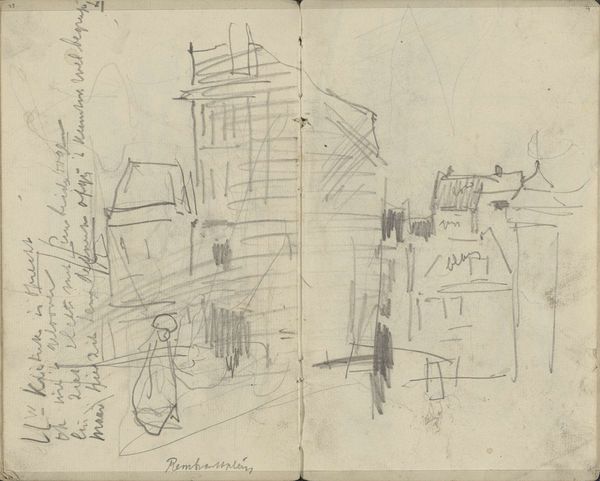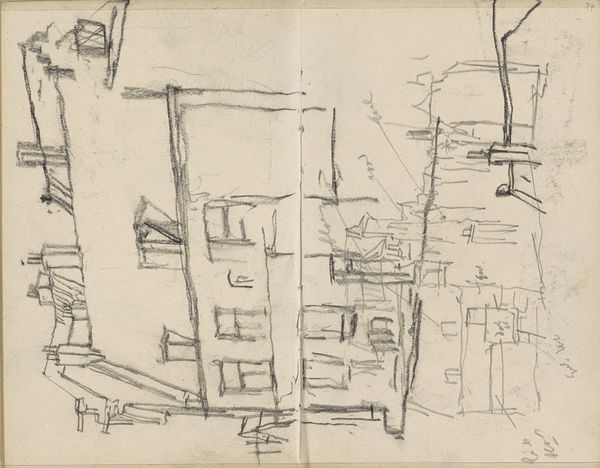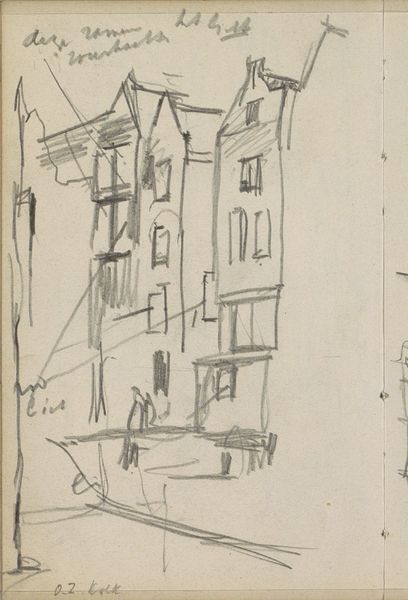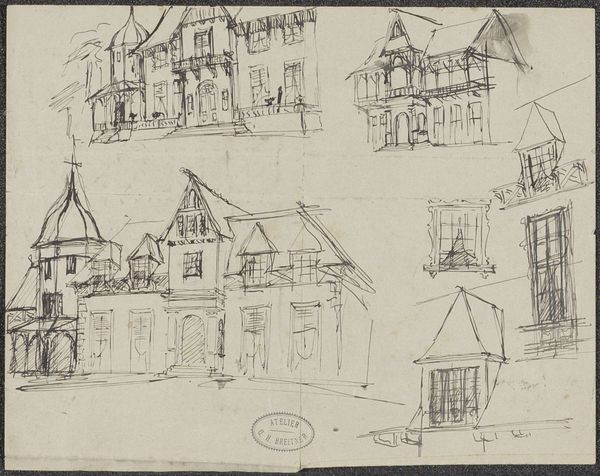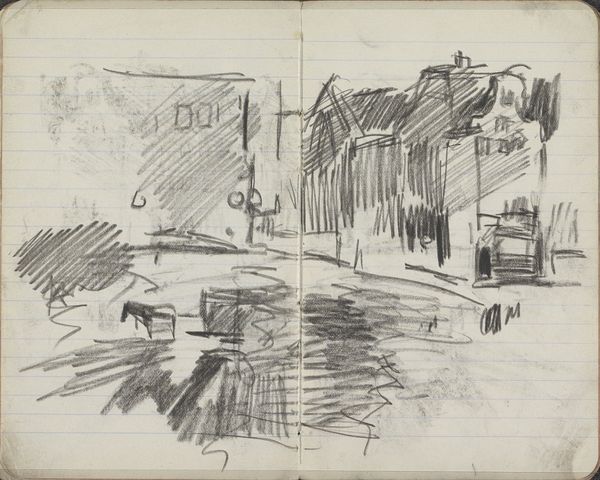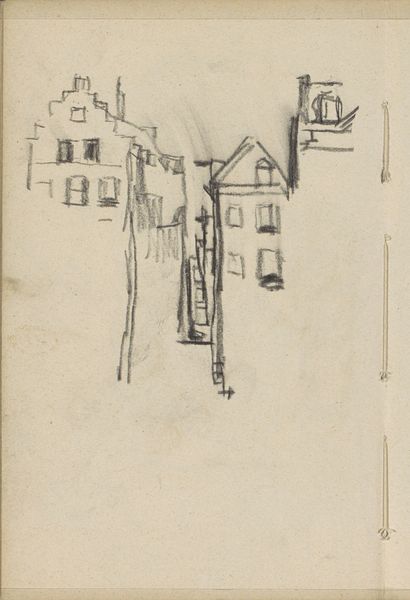
Gezicht op de Dam te Amsterdam met de Beurs van Zocher c. 1894
0:00
0:00
Copyright: Rijks Museum: Open Domain
Curator: At first glance, this evokes a feeling of swift observation, almost fleeting. Editor: Indeed. We’re looking at George Hendrik Breitner’s "Gezicht op de Dam te Amsterdam met de Beurs van Zocher," circa 1894. It’s a drawing, pencil and ink on paper, offering a view of Dam Square in Amsterdam. Curator: You can practically feel the scratch of the pencil on the page. Notice the ruled lines of the notebook peeking through! It pulls back the curtain on the very process of creating art. Not a grand statement, but a moment captured. Editor: Breitner was deeply interested in representing the everyday life of the city, but in this informal setting, one wonders about the intention of this particular piece, maybe it was merely preparatory, something never intended for public consumption. Dam Square was not simply a commercial centre with Zocher's stock exchange as backdrop, it was at the political heart of the Netherlands, a gathering place. Curator: The raw immediacy! The medium so directly embodies the act of making itself: humble materials and direct process, contrasting with what would have been, even in 1894, an important financial place. It emphasizes how art-making is labor, using readily available, relatively inexpensive materials. Editor: It provides a contrasting point of view to that institution and others within Amsterdam. Breitner's contemporaries like Isaac Israels engaged in similar subject matter but approached it with very different intent and social circles. His social realist photography and paintings capture city life's gritty details in a very deliberate way. How would this particular sketchbook page be regarded, and disseminated by others? Curator: What this sketch provides us, unlike finished artworks, is an intimate insight into artistic decision making at that precise moment: what to include, what to ignore, and how those choices become embedded in a system. It makes the whole thing less 'precious.' Editor: It really does make us consider the layers of intent and influence embedded within a seemingly simple sketch, particularly in light of his position within a socio-political environment. Curator: Seeing it this way truly shifts the perspective. I see something in the use of the notebook page itself... the lined page challenges our ideas around art and labor! Editor: It makes you rethink what constitutes public art and artistic value. Curator: Exactly, it's a compelling contrast of industry versus spontaneity that highlights labor at all levels.
Comments
No comments
Be the first to comment and join the conversation on the ultimate creative platform.
